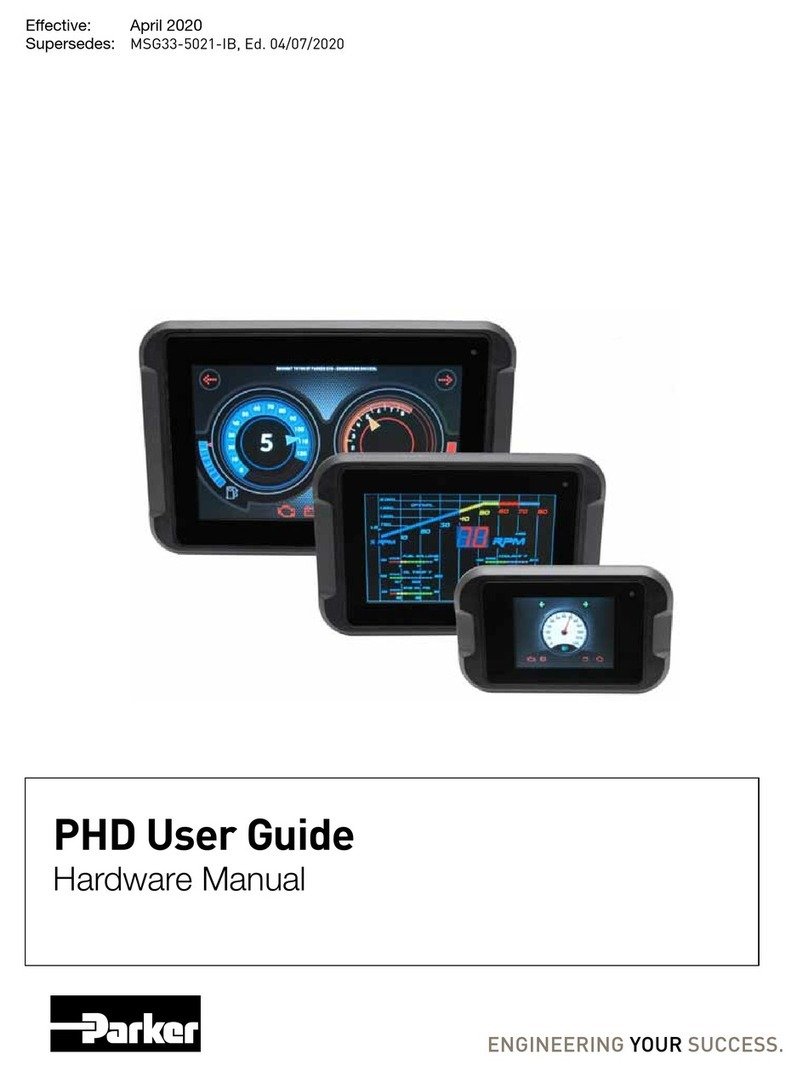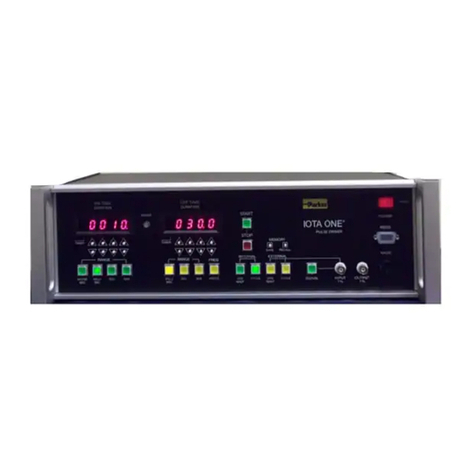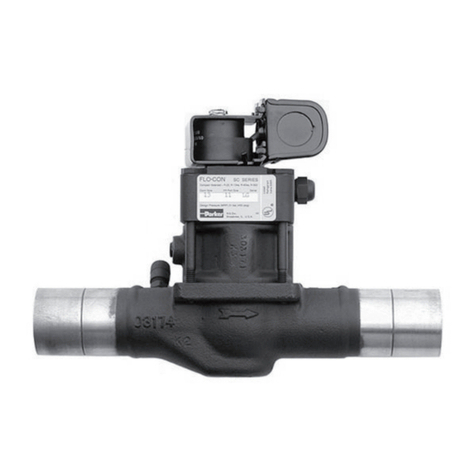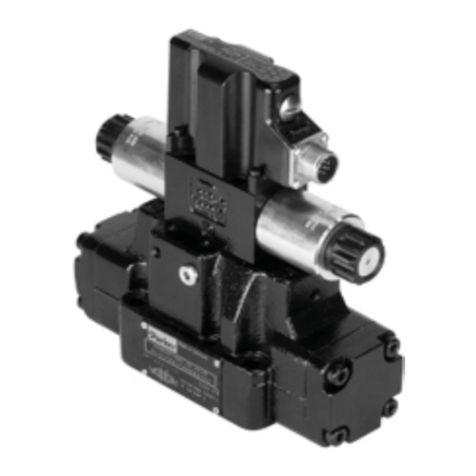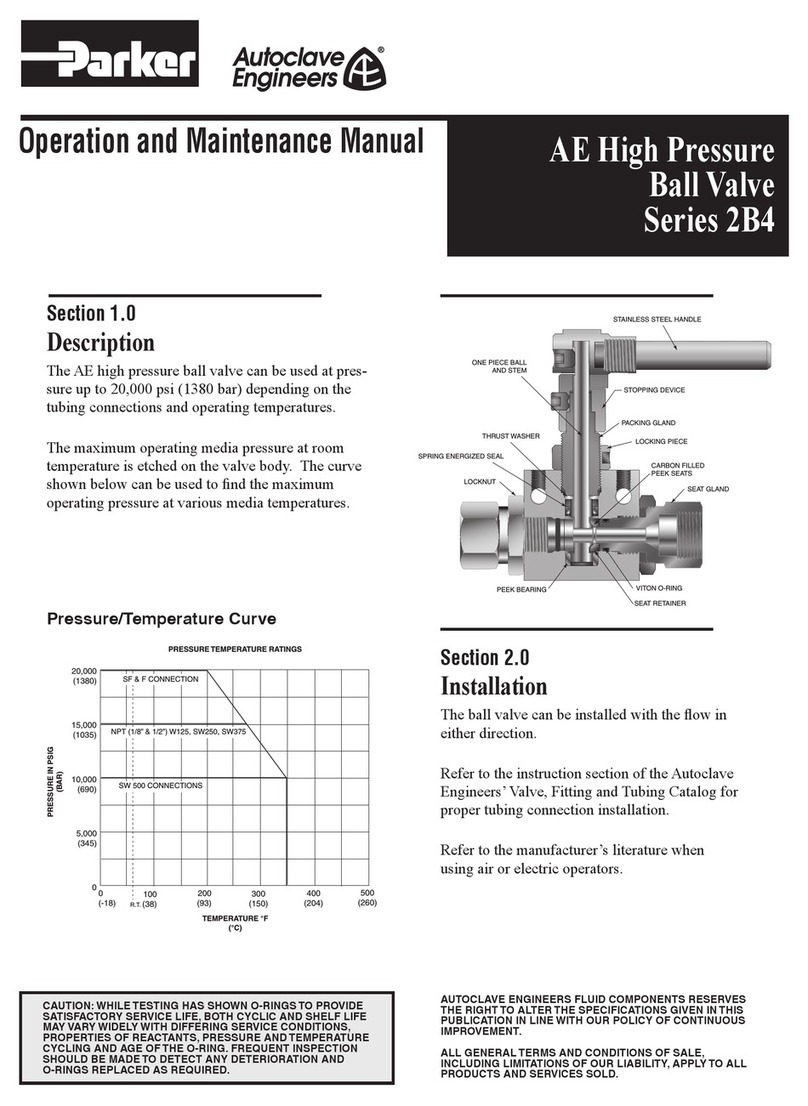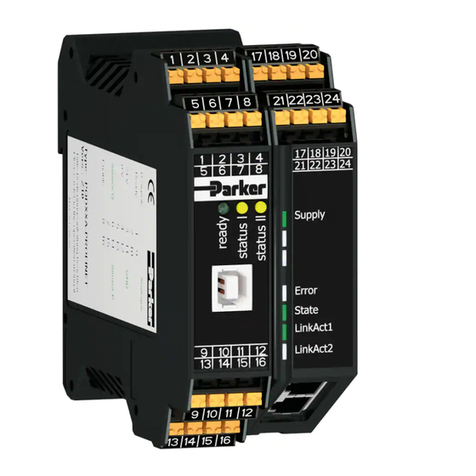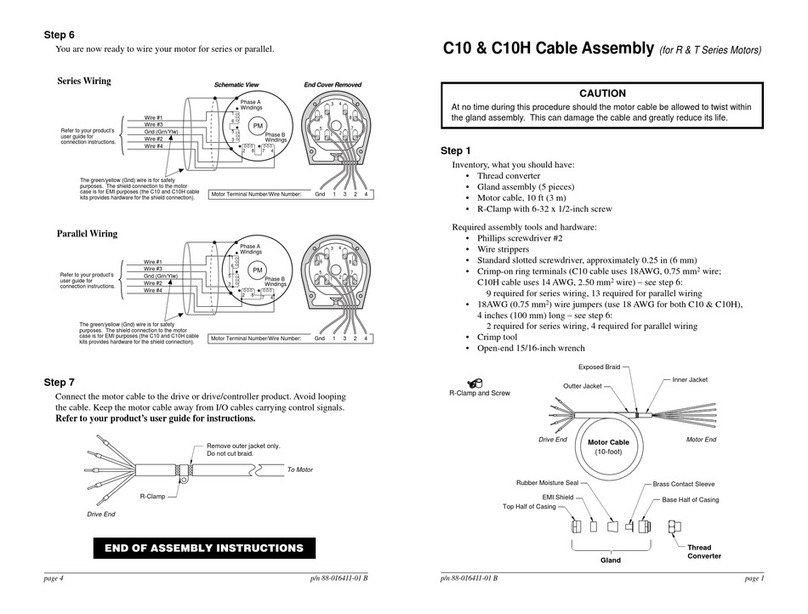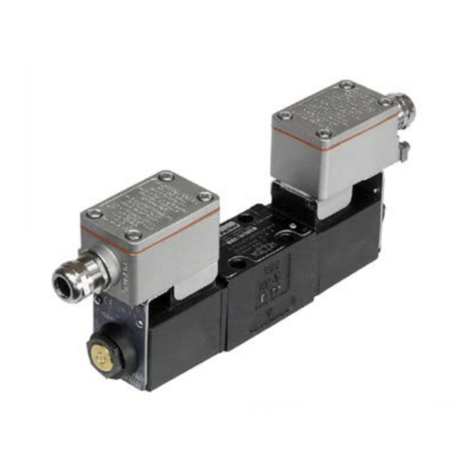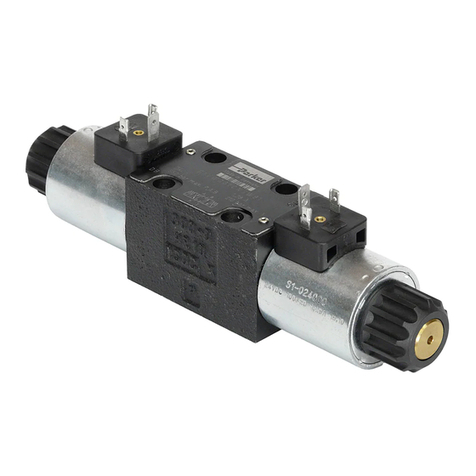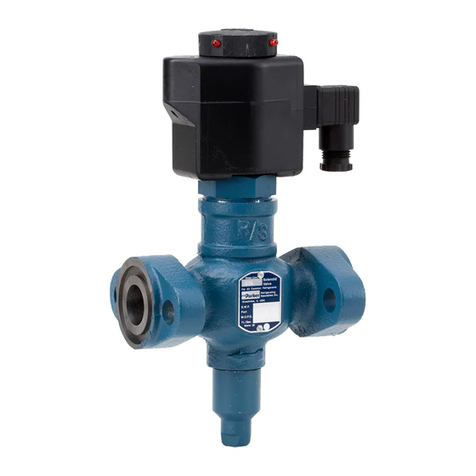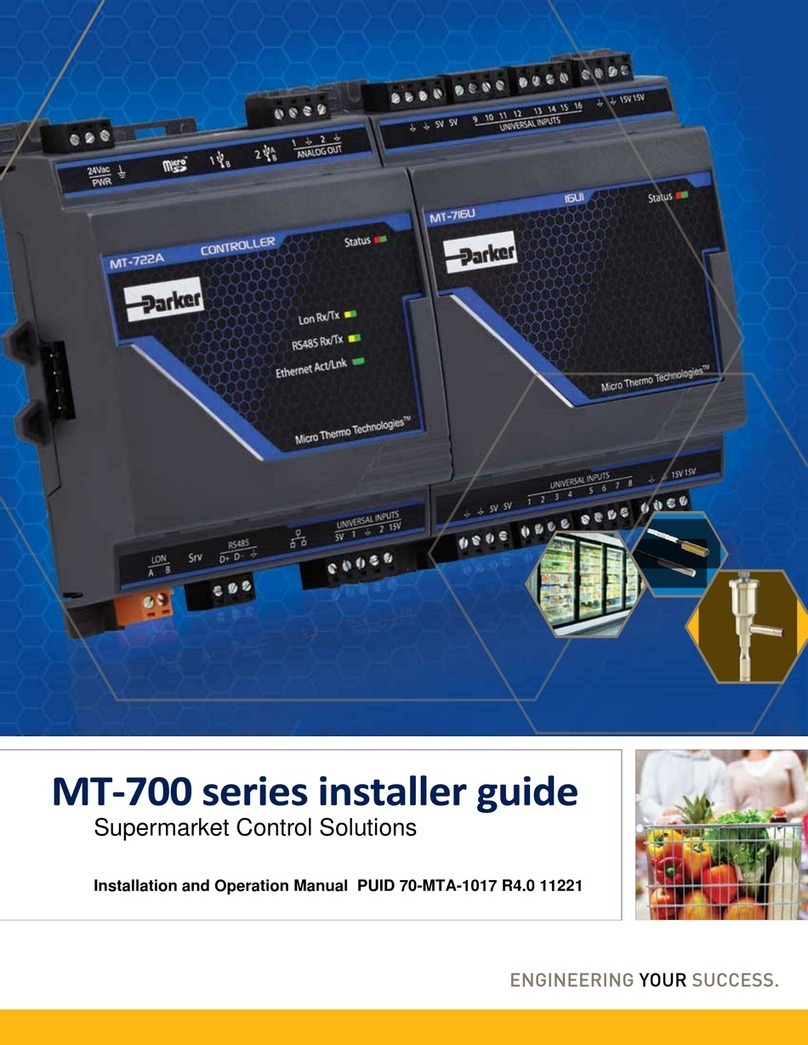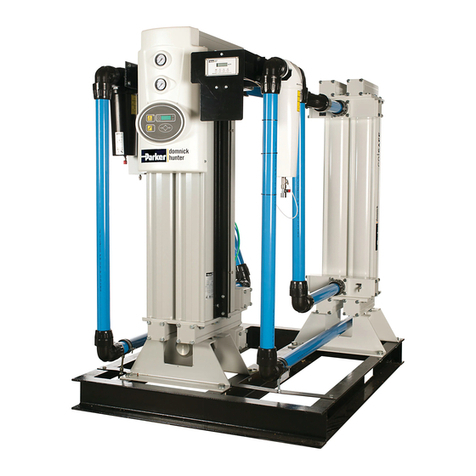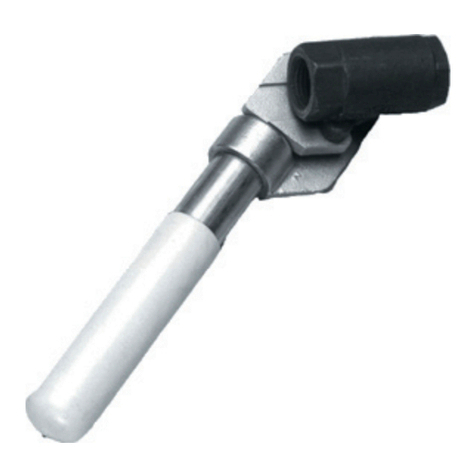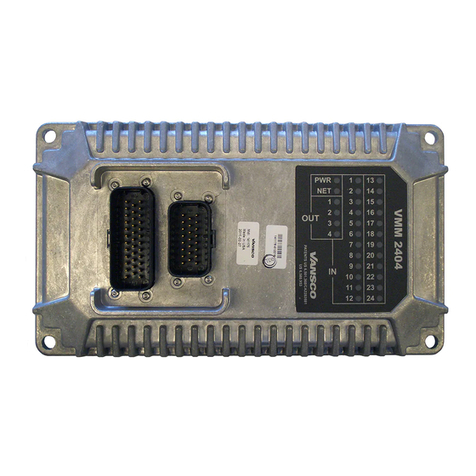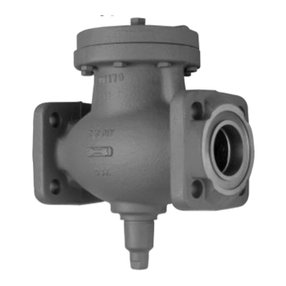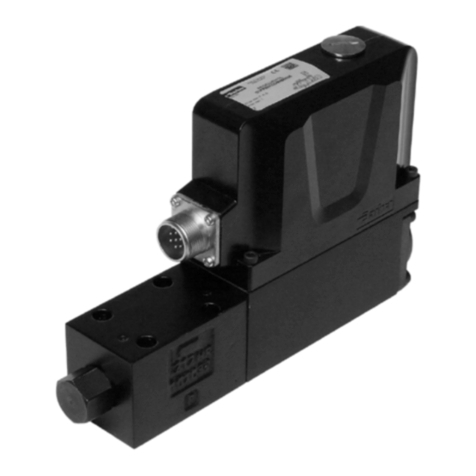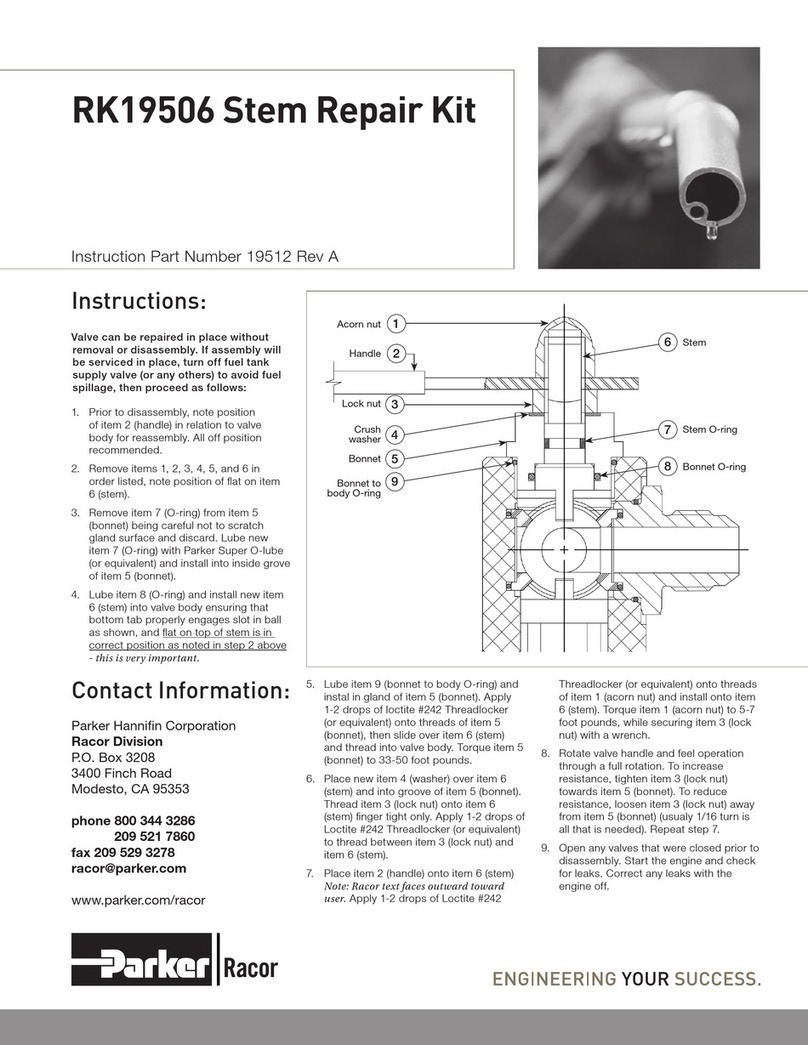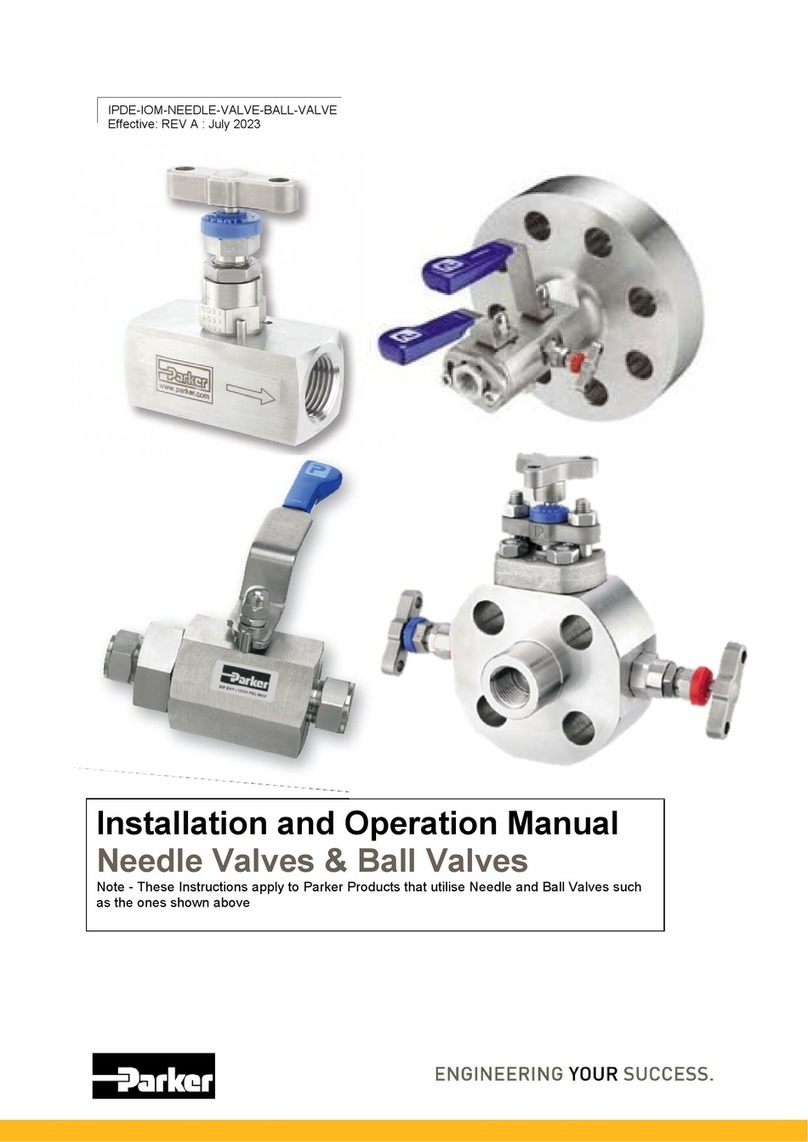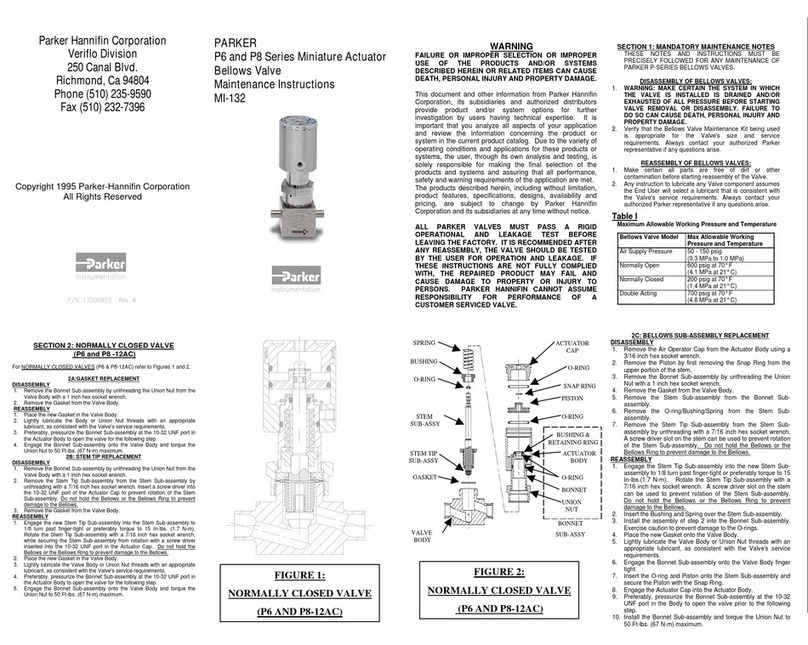
Series C & CW (wall mounting) valves can be operated either
Normally Closed to pressure or Normally Open to pressure.
Connect inlet to port “A” for normally closed valve. Port “B” is
exhaust.
Connect inlet to port “B” for normally open valve. Port “A” is
exhaust.
Plug exhaust port for 2-way operation.
Port Identifications / Connections
Service Procedures
To disassemble unit, use the following procedure:
To detach the hand toggle, cam head, or button actuator assembly
from the valve body assembly, remove the 4 pan head screws (using
a Philips screwdriver). To remove the stem, stem guide, and seals
from the body, unscrew the end plug using a 3/8" Allen wrench.
Then gently press on the “pin” side of the stem until it slides out of
the body.The stem guide may be removed by pulling axially on the
radial holes drilled in the stem guide. Be careful not to scratch the
sealing surfaces or cut the seals.
Thoroughly clean the valve body bore and stem guide, and inspect
for possible nicks, scratches and material imperfections. Lightly
lubricate the stem seals. (Use a non-detergent hydro-carbon
based oil or grease.) Replace any o-rings or other seals if they are
damaged.
The Assembly procedure is the reverse of the above. Tighten the
end plug to 60 in-lbs and apply 15-18 in-lbs of torque to the pan
head mounting screws.
If you have questions concerning how to service this unit,
contact your local authorized dealer or your customer service
representative.
Application Limits
These products are intended for use in general purpose compressed
air systems only.
Operating Pressure Range:
psig Bar kPa
Minimum 0 0 0
Maximum 150 10 1000
OperatingTemperature Range:
0°F to 160°F (-18°C to 71°C)
Installation & Operating Instructions
Valve should be installed with reasonable accessibility for service
whenever possible - repair service kits are available. Keep pipe or
tubing lengths to a minimum with inside clean and free of dirt and
chips. Pipe joint compound should be used sparingly and applied
only to the male pipe - never into the female port. Do not use PTFE
tape to seal pipe joints - pieces have a tendency to break off and
lodge inside the unit, possibly causing malfunction.
Filtered and lubricated air is necessary for maximum valve life and
minimum maintenance.
Factory Pre-Lubrication - All valves are pre-lubricated at assembly
with a petroleum based grease.
Valve Operation
These valves will operate mounted in any position; they are also
suitable for vacuum service.
➤
A B
➤
➤
➤
➤
A B
Normally
Closed Normally
Open
Installation & Service Instructions
V-222D
C2, C3, C3M1A, C4, C5, C9, C13, C92, C94,
CW2, CW3, CW3M1A, CW4, CW5, CW9,
CW13, CW92, & CW94 Series Valves
ISSUED: November, 2009
Supersedes: September, 2000
Doc. #V222D, EN #090938, Rev. 5
Pneumatic Division
Richland, Michigan 49083
269-629-5000
WARNING
To avoid unpredictable system behavior that can cause personal injury
and property damage:
• Disconnect electrical supply (when necessary) before installation,
servicing, or conversion.
• Disconnectairsupplyanddepressurizeallairlinesconnectedtothis
productbeforeinstallation,servicing,orconversion.
• Operate within the manufacturer’s specied pressure, temperature,
and other conditions listed in these instructions.
• Medium must be moisture-free if ambient temperature is below
freezing.
• Serviceaccordingtoprocedureslistedintheseinstructions.
• Installation, service, and conversion of these products must be
performed by knowledgeable personnel who understand how
pneumatic products are to be applied.
• Afterinstallation,servicing,orconversion,airandelectricalsupplies
(when necessary) should be connected and the product tested for
proper function and leakage. If audible leakage is present, or the
product does not operate properly, do not put into use.
• Warningsandspecicationsontheproductshouldnotbecoveredby
paint,etc.Ifmaskingisnotpossible,contactyourlocalrepresentative
forreplacementlabels.
WARNING
FAILURE OR IMPROPER SELECTION OR IMPROPER USE OF THE
PRODUCTS AND/OR SYSTEMS DESCRIBED HEREIN OR RELATED ITEMS
CAN CAUSE DEATH, PERSONAL INJURY AND PROPERTY DAMAGE.
This document and other information from Parker Hannifin Corporation, its
subsidiaries and authorized distributors provide product and/or system options
for further investigation by users having technical expertise. It is important
that you analyze all aspects of your application, including consequences of
any failure and review the information concerning the product or systems
in the current product catalog. Due to the variety of operating conditions
and applications for these products or systems, the user, through its own
analysis and testing, is solely responsible for making the final selection of the
products and systems and assuring that all performance, safety and warning
requirements of the application are met.
The products described herein, including without limitation, product features,
specifications, designs, availability and pricing, are subject to change by Parker
Hannifin Corporation and its subsidiaries at any time without notice.
EXTRA COPIES OFTHESE INSTRUCTIONS ARE AVAILABLE FOR INCLUSION
IN EQUIPMENT / MAINTENANCE MANUALSTHAT UTILIZETHESE PRODUCTS.
CONTACTYOUR LOCAL REPRESENTATIVE.
SafetyGuide
For more complete information on recommended application guidelines, see
the Safety Guide section of Pneumatic Division catalogs or you can download
the PneumaticDivisionSafetyGuide at: www.parker.com/safety
